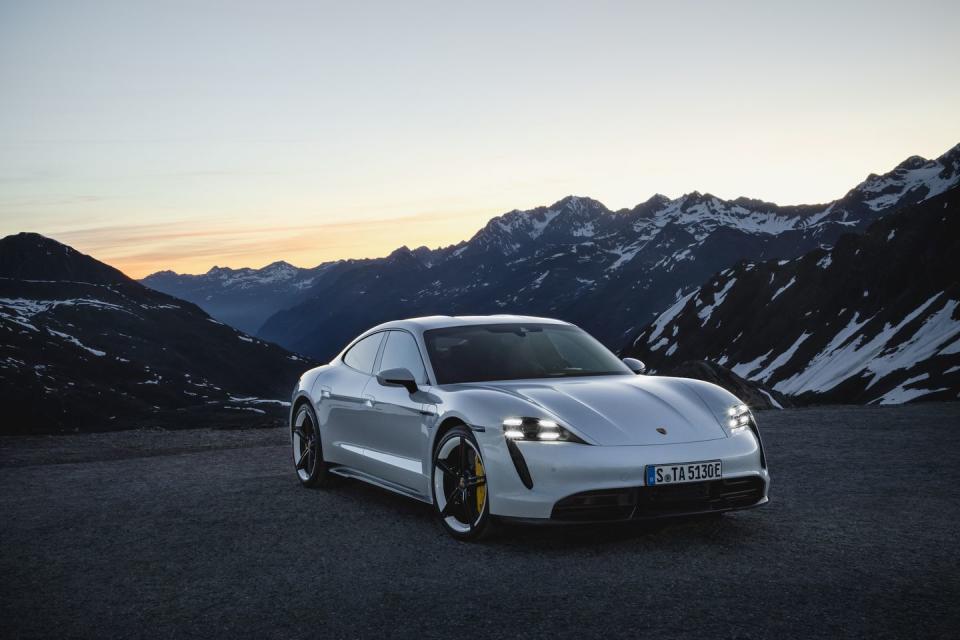Why EVs Might Never Reach "Price Parity" With Conventional Cars

The sighting of "price parity" between EVs and internal-combustion cars has become the auto industry’s white whale. It’s the buzzword that’s launched a thousand academic papers, Wall Street analyses and media blandishments, assuring us we’re "this close" to EVs that cost no more and no less than traditional automobiles.
But price parity has become a textbook case of garbage-in-garbage-out, of getting the wrong answers because you’re asking the wrong questions. It’s an illusion for any number of reasons, beyond government EV subsidies that put a thumb on the market scale. Let’s start with some easy ones: Whatever made you think the auto industry wants to sell you cheaper cars? As a corollary, who convinced anyone that people will buy cars based on maximum utility, economic or otherwise, when car buyers are as flawed and irrational as any other consumer (see the Nobel-winning work of the wondrous Daniel Kahneman)? Automakers may be transitioning to a new and more enlightened age. That doesn’t mean they’ll stop selling the Don Draper fantasy of cars that make you smarter, better-looking, the envy of your friends.
The idea of price parity seems welded to a single myopic variable: the tumbling curve of lithium-ion battery prices. According to Bloomberg New Energy Finance, prices for battery packs have fallen 89 percent since 2010, from a breathtaking average of $1100 per kilowatt-hour to $137 per kWh in 2020. General Motors and Tesla (the latter partnering with battery manufacturer CATL in China) appear to have driven pack prices below the $100-per-kWh level with measures including GM’s $2.3-billion low-cobalt Ultium battery plant. That Holy Grail price point, $100 per kWh, is indeed arriving years ahead of schedule. Next-gen solid-state batteries could deliver the breakthroughs in driving range, charging times, and battery life necessary to accelerate the transition away from fossil fuels and the internal combustion dinosaurs that burn them. No argument with any of that, as wildfires torch the globe and sea levels rise.
The problem is this dubious mental blackboard of price parity in which the down-sloping curve of battery prices finally intersects with IC production costs. Apparently, at that precise nanosecond of critical market mass, a Big Bang will vaporize IC cars and their consumer demand. We’ll wake up to an orderly universe of EV startups and reborn legacy brands. In that imaginary universe—which must include Marvel-esque charging infrastructure, 10-minute refills and 500-mile driving ranges for all—altruistic automakers will package all that brilliance into electric Toyota Yarises or Chevy Sparks and sell them for $16,000, a price on par with today’s IC versions. Or we’ll drive Mercedes S-Classes, larded with revolutionary technology, without having to pay a penny more.
But automakers had better hurry. The sticker price on today’s Nissan Leaf Plus sits stubbornly above $39,000, versus a sharper, better-equipped 2021 Sentra SR from $22,675. (Somehow, the price-parity gurus manage to avoid talking about prices, especially at the lower rungs of the market.)
There are several fatal fallacies here. One is that battery costs are the only shifting variable preventing EVs from costing the same as ICE cars. Secondly, that as those costs fall, automakers will pass every penny of savings to consumers. But if the cost of materials or labor were the sole driver of the price of a good, a pair of Air Jordans would cost about $17.99. An iPhone 12 Pro Max definitely wouldn’t cost $1100. A Porsche 911 S might cost $5000 more than a mid-engine Corvette rather than $55,000 more. Cars assembled in lower-wage southern states, or Mexico, would be priced lower than cars built in Michigan.
Those differences between costs and revenue? They’re called profits. Perhaps the price-parity gurus have heard of them. As ever, EV prices will depend on variables from design and engineering to brand image and marketing, not just battery bean-counting. There’s a reason Porsche banks $18,500 of profit for every car sold, an industry-leading 16.6-percent net margin. Or why an electric Taycan Turbo S starts from nearly $187,000, versus $99,000 for a comparable Tesla Model S Performance.

The car companies’ idea of parity, I’m afraid, is that all consumers should pay more. That’s exemplified by the average new-car price that, according to Edmunds, reached a record $40,107 in 2020, a dizzying climb from $29,217 in 2010.
The industry has been frank about its strategy: Budget cars are out, status cars are in. In America especially, the entire business model has been predicated on fleeing unprofitable car segments and luring customers into SUVs and pickups, garnished with luxury and tech features like so many shaved truffles. Why would they dream of killing their three-ton golden goose and going backwards?

 Yahoo Autos
Yahoo Autos 